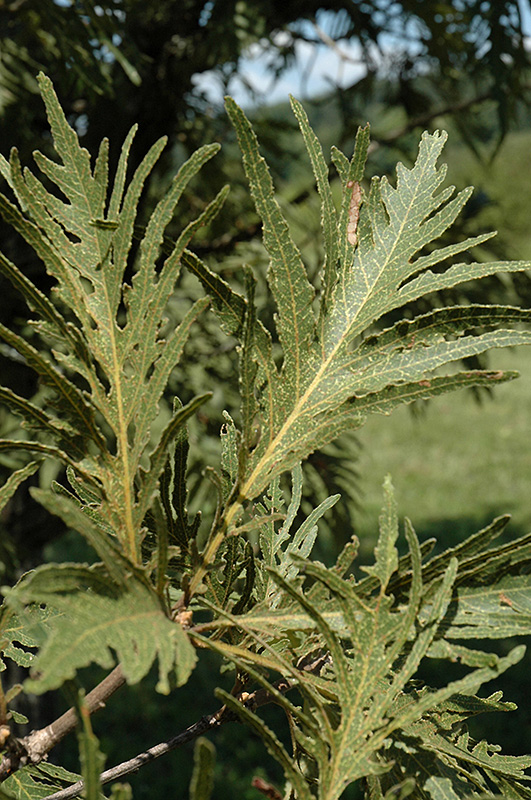>> Home
Cutleaf Japanese Emperor Oak
Quercus dentata 'Pinnatifida'
Height: 20 feet
Spread: 20 feet
Sunlight:
![]()
Hardiness Zone: 4b
Other Names: Featherleaf Japanese Emperor Oak, Daimyo Oak
Description:
This variety of oak has amazingly different leaves that are deeply dissected with a fine texture; this very slow growing tree is an excellent, unique feature for the landscape, may get quite large over many years
Ornamental Features
Cutleaf Japanese Emperor Oak has attractive dark green foliage with light green undersides which emerges pink in spring on a tree with a round habit of growth. The deeply cut lobed leaves are highly ornamental and turn brown in fall. However, the fruit can be messy in the landscape and may require occasional clean-up. The furrowed gray bark adds an interesting dimension to the landscape.
Landscape Attributes
Cutleaf Japanese Emperor Oak is a dense deciduous tree with a more or less rounded form. Its relatively fine texture sets it apart from other landscape plants with less refined foliage.
This tree will require occasional maintenance and upkeep, and is best pruned in late winter once the threat of extreme cold has passed. It is a good choice for attracting squirrels to your yard. Gardeners should be aware of the following characteristic(s) that may warrant special consideration;
- Messy
Cutleaf Japanese Emperor Oak is recommended for the following landscape applications;
- Accent
- Shade
Planting & Growing
Cutleaf Japanese Emperor Oak will grow to be about 20 feet tall at maturity, with a spread of 20 feet. It has a high canopy with a typical clearance of 6 feet from the ground, and is suitable for planting under power lines. As it matures, the lower branches of this tree can be strategically removed to create a high enough canopy to support unobstructed human traffic underneath. It grows at a slow rate, and under ideal conditions can be expected to live to a ripe old age of 300 years or more; think of this as a heritage tree for future generations!
This tree should only be grown in full sunlight. It is very adaptable to both dry and moist growing conditions, but will not tolerate any standing water. It is not particular as to soil type or pH. It is somewhat tolerant of urban pollution. This is a selected variety of a species not originally from North America.

